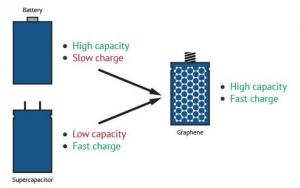Графен
Содержание:
- Координаты
- Built in scalars¶
- Batteries and supercapacitors
- Battery basics
- Графен и рынок
- Спиноры
- Graphene-enhanced battery products moving towards commercialization
- Rate this page
- Школьные годы
- Как развивается цветок герберы в домашних условиях
- What exactly is graphene?
- Ссылки
- Who discovered graphene?
- Получение графена
- The future of graphene research
- How can we use graphene?
Координаты
Убрал координаты очевидно взятые из английской статьи, поскольку не совсем понятно откуда они вообще взялись, ни одна экспедиция это место вообще никаким вниманием не удостоила. Talifero 16:04, 29 ноября 2008 (UTC)
- Вы пишете ниже в обсуждении, что этот список координат сделан по данным учёных экспедиции Кулика. Можно это-же расписать подробнее в статье? А то, правда, никаких АИ не приведено. С уважением ←A.M.Vachin 08:20, 16 сентября 2009 (UTC)
- На счет списка точных координат, я просто заменил координаты кем то взятые с английской вики, они промахнулись километров на 10, я понимаю что в масштабах Сибири ерунда но все же…. Сам список выглядит абсурдно но все данные собраны экспедицией Кулика, его составили ученые входившие в её состав. Так что выбрать какие-то одни рука не поднялась. Округлять опять же, грош цена тогда всей статье. Так можно довести до уровня справочной: Ну упал там где то. Ну поищите на карте, вы что не знаете где Сибирь? она большая не промахнетесь.—Talifero 12:06, 2 сентября 2009 (UTC)
Built in scalars¶
Graphene defines the following base Scalar Types that match the default :
Graphene also provides custom scalars for common values:
import datetime
from graphene import Schema, ObjectType, Date
class Query(ObjectType):
one_week_from = Date(required=True, date_input=Date(required=True))
def resolve_one_week_from(root, info, date_input):
assert date_input == datetime.date(2006, 1, 2)
return date_input + datetime.timedelta(weeks=1)
schema = Schema(query=Query)
results = schema.execute("""
query {
oneWeekFrom(dateInput: "2006-01-02")
}
""")
assert results.data == {"oneWeekFrom" "2006-01-09"}
import datetime
from graphene import Schema, ObjectType, DateTime
class Query(ObjectType):
one_hour_from = DateTime(required=True, datetime_input=DateTime(required=True))
def resolve_one_hour_from(root, info, datetime_input):
assert datetime_input == datetime.datetime(2006, 1, 2, 15, 4, 5)
return datetime_input + datetime.timedelta(hours=1)
schema = Schema(query=Query)
results = schema.execute("""
query {
oneHourFrom(datetimeInput: "2006-01-02T15:04:05")
}
""")
assert results.data == {"oneHourFrom" "2006-01-02T16:04:05"}
import datetime
from graphene import Schema, ObjectType, Time
class Query(ObjectType):
one_hour_from = Time(required=True, time_input=Time(required=True))
def resolve_one_hour_from(root, info, time_input):
assert time_input == datetime.time(15, 4, 5)
tmp_time_input = datetime.datetime.combine(datetime.date(1, 1, 1), time_input)
return (tmp_time_input + datetime.timedelta(hours=1)).time()
schema = Schema(query=Query)
results = schema.execute("""
query {
oneHourFrom(timeInput: "15:04:05")
}
""")
assert results.data == {"oneHourFrom" "16:04:05"}
import decimal
from graphene import Schema, ObjectType, Decimal
class Query(ObjectType):
add_one_to = Decimal(required=True, decimal_input=Decimal(required=True))
def resolve_add_one_to(root, info, decimal_input):
assert decimal_input == decimal.Decimal("10.50")
return decimal_input + decimal.Decimal("1")
schema = Schema(query=Query)
results = schema.execute("""
query {
addOneTo(decimalInput: "10.50")
}
""")
assert results.data == {"addOneTo" "11.50"}
from graphene import Schema, ObjectType, JSONString, String
class Query(ObjectType):
update_json_key = JSONString(
required=True,
json_input=JSONString(required=True),
key=String(required=True),
value=String(required=True)
)
def resolve_update_json_key(root, info, json_input, key, value):
assert json_input == {"name" "Jane"}
json_inputkey = value
return json_input
schema = Schema(query=Query)
results = schema.execute("""
query {
updateJsonKey(jsonInput: "{\\"name\\": \\"Jane\\"}", key: "name", value: "Beth")
}
""")
assert results.data == {"updateJsonKey" "{\"name\"\"Beth\"}"}
Batteries and supercapacitors
While there are certain types of batteries that are able to store a large amount of energy, they are very large, heavy and release energy slowly. Capacitors, on the other hand, are able to charge and discharge quickly but hold much less energy than a battery. The use of graphene in this area, though, presents exciting new possibilities for energy storage, with high charge and discharge rates and even economical affordability. Graphene-improved performance thereby blurs the conventional line of distinction between supercapacitors and batteries.
 Graphene batteries combine the advantages of both batteries and supercapacitors
Graphene batteries combine the advantages of both batteries and supercapacitors
Battery basics
Batteries serve as a mobile source of power, allowing electricity-operated devices to work without being directly plugged into an outlet. While many types of batteries exist, the basic concept by which they function remains similar: one or more electrochemical cells convert stored chemical energy into electrical energy. A battery is usually made of a metal or plastic casing, containing a positive terminal (an anode), a negative terminal (a cathode) and electrolytes that allow ions to move between them. A separator (a permeable polymeric membrane) creates a barrier between the anode and cathode to prevent electrical short circuits while also allowing the transport of ionic charge carriers that are needed to close the circuit during the passage of current. Finally, a collector is used to conduct the charge outside the battery, through the connected device.
When the circuit between the two terminals is completed, the battery produces electricity through a series of reactions. The anode experiences an oxidation reaction in which two or more ions from the electrolyte combine with the anode to produce a compound, releasing electrons. At the same time, the cathode goes through a reduction reaction in which the cathode substance, ions and free electrons combine into compounds. Simply put, the anode reaction produces electrons while the reaction in the cathode absorbs them and from that process electricity is produced. The battery will continue to produce electricity until electrodes run out of necessary substance for creation of reactions.
Графен и рынок
Коммерческие успехи графена отстают от взрывного роста интереса к нему в науке. Тем не менее, ряд стран сделали ставку на лидерство в графеновой промышленности будущего и вложили миллиарды долларов в научные и инженерные разработки на основе графена. Прежде всего здесь следует упомянуть Китай, США, Южную Корею, Японию, Великобританию, Австралию и Сингапур, а также страны Евросоюза. В этих государствах созданы специализированные исследовательские и инжиниринговые центры, которые во многом стали драйвером для создания малых инновационных компаний, продвигающих передовые разработки на рынок, и питательной средой для таких крупных компаний, как Samsung, Huawei, Xiaomi, Airbus, Boeing, Fiat-Chrysler Automobiles, Siemens и других. Ожидается, что первыми успешными коммерческими продуктами на основе графена станут композитные материалы и функциональные покрытия, графеновые аккумуляторные батареи, печатная электроника на основе графеновых чернил, высокоскоростные фотодетекторы и высокочувствительные биосенсоры.
Первые продукты уже в продаже. Сейчас стало очевидным, что только одни высокоемкие и быстрозарядные аккумуляторные батареи на основе двумерных материалов до неузнаваемости изменят автомобильную промышленность. После 2022 года ожидается появление на рынке гибких и прозрачных солнечных батарей, суперконденсаторов, систем очистки воды, нейроинтерфейсов для обеспечения связи “компьютер-мозг” и гибких электронных устройств.
И все это — далеко не полный перечень разработок на основе графена. Интерес ученых и инженеров к двумерным материалам с каждым годом только растет. Бизнес с энтузиазмом вкладывается в технологические проекты, связанные с этими материалами, поэтому можно считать, что самое интересное нас еще ждет впереди.
Спустя 10 лет после вручения Нобелевской премии нашим соотечественникам мы уже не можем говорить только о графене, как о самом важном, самом известном и упоминаемом двумерном материале. За эти годы ученые и инженеры обнаружили сотни других двумерных материалов
Миру открылась новая вселенная, которая еще требует осмысления, и для этой вселенной нам только предстоит создать свою “таблицу Менделеева”. Нет сомнений, что мы еще увидим нобелевские премии за ван-дер-ваальсовы гетероструктуры и новые функциональные материалы.
Спиноры
Волновая функция для гамильтониана имеет вид столбца:
- Ψ=(ψKAψKBψK′AψK′B),{\displaystyle \Psi =\left({\begin{array}{c}\psi _{KA}\\\psi _{KB}\\\psi _{K’A}\\\psi _{K’B}\\\end{array}}\right),}
где индексы соответствуют подрешёткам кристалла в прямом пространстве: A и B, а также долинам в обратном пространстве: K{\displaystyle K} и K′{\displaystyle K’}. Гамильтониан для K{\displaystyle K} долины можно записать кратко
- H^K=−iℏvFσ→⋅∇→.{\displaystyle {\hat {H}}_{K}^{0}=-i\hbar v_{F}{\vec {\sigma }}\cdot {\vec {\nabla }}.}
Этот двумерный гамильтониан аналог уравнения Дирака для безмассовых частиц, за исключением скорости света, в качестве которой выступает скорость Ферми. Из трёхмерного уравнения Дирака следует существование ферми-частиц, то есть частиц обладающих полуцелым спином. В графене из формально подобного уравнения следует существование характеристики названной псевдоспин, которая имеет отношение только к распределению электронной плотности между подрешётками кристалла. Таким образом состояние псевдоспин вверх означает подрешётку A, а псевдоспин вниз — подрешётку B. Для двух долин в k-пространстве вводят характеристику изоспин, и электроны конечно имеют внутреннюю степень свободы: спин (не отражённую в этом гамильтониане для графена).
Решения для свободных частиц для долин K{\displaystyle K} и K′{\displaystyle K’} имеют различный вид для положительной энергии (электроны) и отрицательной энергии (дырки):
- ψKe,h(κ→)=(ψKAψKB)=12(exp(−iϕκ→2)±exp(iϕκ→2)),ψK′e,h(κ→)=(ψK′AψK′B)=12(exp(iϕκ→2)±exp(−iϕκ→2)).{\displaystyle \psi _{K}^{e,h}({\vec {\kappa }})=\left({\begin{array}{c}\psi _{KA}\\\psi _{KB}\\\end{array}}\right)={\frac {1}{\sqrt {2}}}\left({\begin{array}{c}\exp(-i\phi _{\vec {\kappa }}/2)\\\pm \exp(i\phi _{\vec {\kappa }}/2)\\\end{array}}\right),\,\psi _{K’}^{e,h}({\vec {\kappa }})=\left({\begin{array}{c}\psi _{K’A}\\\psi _{K’B}\\\end{array}}\right)={\frac {1}{\sqrt {2}}}\left({\begin{array}{c}\exp(i\phi _{\vec {\kappa }}/2)\\\pm \exp(-i\phi _{\vec {\kappa }}/2)\\\end{array}}\right).}
Здесь ϕκ→=arctan(κyκx){\displaystyle \phi _{\vec {\kappa }}=\arctan(\kappa _{y}/\kappa _{x})} — полярный угол волнового вектора.
Полный гамильтониан можно представить в более симметричной форме:
- H^=−iℏvFτ⊗σ→⋅∇→,{\displaystyle {\hat {H}}^{0}=-i\hbar v_{F}\tau _{0}\otimes {\vec {\sigma }}\cdot {\vec {\nabla }},}
где единичная матрица τ действует на индексы долин. Тогда спинор имеет вид:
- Ψ=(ψKAψKBψK′B−ψK′A).{\displaystyle \Psi =\left({\begin{array}{c}\psi _{KA}\\\psi _{KB}\\\psi _{K’B}\\-\psi _{K’A}\\\end{array}}\right).}
Graphene-enhanced battery products moving towards commercialization
Graphene-based batteries have exciting potential and while they are not yet fully commercially available yet, R&D is intensive and will hopefully yield results in the future.
In December 2018, India-based Log 9 Materials announced that it is working on graphene-based metal-air batteries, that in theory may even lead to electric vehicles that run on water. The metal air batteries use a metal as anode, air (oxygen) as cathode and water as an electrolyte. A graphene rod is used in the air cathode of the batteries. Since Oxygen has to be used as the cathode, the cathode material has to be porous to let the air pass, a property in which graphene excels. According to Log 9 Materials, the graphene used in the electrode is able to increase the battery efficiency by five times at one-third the cost.
In November 2017, Samsung developed a unique «graphene ball» that could make lithium-ion batteries last longer and charge faster. In fact, Samsung Advanced Institute of Technology (SAIT) said that using the new graphene ball material to make batteries will increase their capacity by 45% and make their charging speed five times faster. It was also said that the Samsung battery that will use this graphene ball material will be able to maintain a temperature of 60 degrees Celsius that is required for use in electric cars.
In November 2016, Huawei unveiled a new graphene-enhanced Li-Ion battery that can remain functional at higher temperature (60° degrees as opposed to the existing 50° limit) and offers a longer operation time — double than what can be achieved with previous batteries. To achieve this breakthrough, Huawei incorporated several new technologies — including an anti-decomposition additives in the electrolyte, chemically stabilized single crystal cathodes — and graphene to facilitate heat dissipation. Huawei says that the graphene reduces the battery’s operating temperature by 5 degrees.
In June 2014, US based Vorbeck Materials announced the Vor-Power strap, a lightweight flexible power source that can be attached to any existing bag strap to enable a mobile charging station (via 2 USB and one micro USB ports). the product weighs 450 grams, provides 7,200 mAh and is probably the world’s first graphene-enhanced battery.
In May 2014, American company Angstron Materials rolled out several new graphene products. The products, said to become available roughly around the end of 2014, include a line of graphene-enhanced anode materials for Lithium-ion batteries. The battery materials were named “NANO GCA” and are supposed to result in a high capacity anode, capable of supporting hundreds of charge/discharge cycles by combining high capacity silicon with mechanically reinforcing and conductive graphene.
Developments are also made in the field of graphene batteries for electric vehicles. Henrik Fisker, who announced its new EV project that will sport a graphene-enhanced battery, unveiled in November 2016 what is hoped to be a competitor to Tesla. However, the Fisker battery was later announced to not rely on graphene.
In August 2014, Tesla suggested the development of a «new battery technology» that will almost double the capacity for their Model S electric car. It is unofficial but reasonable to assume graphene involvement in this battery.
Many other companies are also working on incorporating graphene into various kinds of batteries, for more information we recommend reading our Graphene Batteries Market Report.
Rate this page
Школьные годы
Много ребят среди друзей Нурсултана было из числа эвакуированных, но никогда они не делились в своих играх по национальностям. Разделение мальчишеских ватаг происходило по улицам, на которых проживали. Иногда дрались улица на улицу, но в особенно тяжелые периоды драки уходили на второй план, а главными были взаимопомощь и дружба.
Нурсултан с одноклассниками на последнем школьном звонке
Волшебный мир знаний рано стал интересовать маленького Назарбаева. В школе он был прилежным учеником, одним из лучших в классе. Особенно сильно любил читать, как только удавалось достать где-то очередную книгу, он с головой погружался в нее. А в летнее время, когда в предгорьях Алатау пасли скот и ночевали у костра, Нурсултану нравилось слушать истории старших о предыдущих поколениях казахов.
На вручении аттестатов о среднем образовании завуч школы отметил аналитический ум и любознательность Назарбаева. Отличные знания и широкий кругозор заметно выделяли его среди одноклассников. В школьные годы всегда занимался спортом, был крепким физически и выглядел старше своих сверстников. Но самые важные качества, которые в нем проявились уже на тот период, – стремление к лидерству и умение грамотно выстраивать отношения. В компаниях он всегда был заводилой, пел, шутил, быстро располагал к себе людей.
Как развивается цветок герберы в домашних условиях
What exactly is graphene?
The simplest way to describe graphene is that it is a single, thin layer of graphite — the soft, flaky material used in pencil lead. Graphite is an allotrope of the element carbon, meaning it possesses the same atoms but they’re arranged in a different way, giving the material different properties. For example, both diamond and graphite are forms of carbon, yet they have wildly different natures. Diamonds are incredibly strong, while graphite is brittle. Graphene’s atoms are arranged in a hexagonal arrangement.
Graphene’s atoms are arranged in a honeycomb pattern Alex LMX / Shutterstock
Interestingly, when graphene is isolated from graphite it takes on some miraculous properties. It is a mere one-atom thick, the first two-dimensional material ever discovered. Despite this, graphene is also one of the strongest materials in the known universe. With a tensile strength of 130 GPa (gigapascals), it is more than 100 times stronger than steel.
Graphene’s incredible strength despite being so thin is already enough to make it amazing, however, its unique properties do not end there. It is also flexible, transparent, highly conductive, and seemingly impermeable to most gases and liquids. It almost seems as though there is no area in which graphene does not excel.
Ссылки
Who discovered graphene?
Photos: The discovery of carbon nanotubes in 1991 helped spur researchers on to
produce the first sample of graphene in 2004. Picture of aligned carbon nanotubes by Junbing Yang courtesy of Argonne National Laboratory
published on Flickr
under a Creative Commons Licence.
Scientists have been puzzling over graphene for decades. Back in 1947, Canadian physicist Philip Wallace wrote a pioneering paper about the electronic behaviour of graphite that sparked considerable interest in the field.
Nobel-Prize winning chemist Linus Pauling was speculating about how flat, single layers of carbon atoms would behave as long ago as
1960. In 1962, such materials were named «graphene» by German chemist
Hanns-Peter Boehm, who had spotted them under
his electron microscope the year before.
Theoretical research into graphene continued for the next four decades, boosted in
the 1980s and 1990s by the discoveries of fullerenes (effectively, graphene curled up into balls) and carbon nanotubes
(graphene folded into a pipe). Even so, no-one could ever actually make the stuff in practice;
graphene was only produced in a laboratory in 2004, by Russian-born
scientists
Andre Geim and
Konstantin
Novoselov working at the UK’s University of Manchester.
They made graphene by using pieces of sticky tape to pull off flakes of graphite,
then folding the tape and pulling it apart to cleave the graphite into even smaller layers.
Eventually, after a great deal of work, they were amazed to find they had some bits of
graphite only one atom thick—graphene, in other words.
Получение графена
Начиная с 2004 г., когда был открыт новейший наноматериал, ученые освоили целый ряд методов его получения. Однако самыми основными из них считаются способы:
— механической эксфолиации;- эпитаксиального роста в вакууме;- химического перофазного охлаждения (CVD-процесс).
Первый из этих трех методов является наиболее простым. Производство графена при механической эксфолиации представляет собой нанесение специального графита на клейкую поверхность изоляционной ленты. После этого основу, подобно листу бумаги, начинают сгибать и разгибать, отделяя нужный материал. При применении данного способа графен получается самого высокого качества. Однако подобные действия не годятся для массового производства данного наноматериала.
При использовании метода эпитаксиального роста применяют тонкие кремниевые пластины, поверхностный слой которых является карбидом кремния. Далее этот материал нагревают при очень высокой температуре (до 1000 К). В результате химической реакции происходит отделение атомов кремния от атомов углерода, первые из которых испаряются. В результате на пластинке остается чистый графен. Недостатком подобного метода является необходимость использования очень высоких температур, при которых может произойти сгорание атомов углерода.
Самым надежным и простым способом, применяемым для массового производства графена, является CVD-процесс. Он представляет собой метод, при котором протекает химическая реакция между металлическим покрытием-катализатором и углеводородными газами.
The future of graphene research
Given graphene’s seemingly endless list of strengths, one would expect to see it everywhere. Why, then, has graphene not been widely adopted? As with most things, it comes down to money. Graphene is still extremely expensive to produce in large quantities, limiting its use in any product that would demand mass production. Moreover, when large sheets of graphene are produced, there is an increased risk of tiny fissures and other flaws appearing in the material. No matter how incredible a scientific discovery may be, economics will always decide success.
Production issues aside, graphene research is by no means slowing down. Research laboratories the world over — including the University of Manchester, where graphene was first discovered — are continually filing patents for new methods of creating and using graphene. The European Union approved funding for a flagship program in 2013, one that will fund graphene research for use in electronics. Meanwhile, major tech companies in Asia are conducting research on graphene, including Samsung.
Revolutions don’t happen overnight. Silicon was discovered in the mid-19th century, but it took nearly a century before silicon semiconductors paved the way for the rise of computers. Might graphene, with its almost mythical qualities, be the resource that drives the next era of human history? Only time will tell.
Editors’ Recommendations
-
Moore’s law is reaching its limits. Could graphene circuits help?
-
Artificial atmospheres: How we’ll build a base with breathable air on Mars
-
Power plants on other planets: How we’ll generate electricity on Mars
-
Perfecting propulsion: How we’ll get humans to Mars
-
What happened to Mars’ water? It’s more complicated than we thought
How can we use graphene?
We can answer that question in at least three
different ways. First, because graphene has so many excellent
properties, and because all those properties probably aren’t
needed in the same material (for the same
applications), it makes sense to start talking about different types
of graphene (or even different graphenes) that are being used in
different ways or being optimized for particular purposes. So we’re likely
to see some graphenes being developed for structural uses (in
composites materials), some being optimized to make the most of their
extraordinary electron-carrying properties (for use in electronic
components), others where we make the most of low-resistivity (in
energy-saving power systems), and still others where excellent
transparency and electrical conductivity are the important things (in
solar cells and computer displays).
Photo: Computer memory chips like this might become smaller and faster if graphene replaces the silicon we currently use.
Second, we can see graphene as an
exciting replacement for existing materials that have been pushed to
their physical limits. Silicon transistors
(the switching devices used as
memories and «decision-making» logic gates in
computers), for example, have
consistently become smaller and more powerful over the last few
decades, following a trend known as , but computer
scientists have long expressed concerns that the same rate of
progress can’t continue as we approach basic limitations imposed by
the laws of physics. Some scientists are already imagining smaller and faster
transistors in which silicon is replaced by graphene, taking computer devices
even closer to the absolute limits of physics. In theory, we could use graphene to make
ballistic transistors that store information or switch
on and off at super-high speeds by manipulating single electrons. In much the same way,
graphene could revolutionize other areas of technology constrained
by conventional materials. For example, it could spawn lighter
and stronger airplanes (by replacing composite materials or metal
alloys), cost-competitive and more efficient solar panels (replacing silicon again),
more energy-efficient power transmission equipment (in place of superconductors), and
supercapacitors with
thinner plates that can be charged in seconds and store more energy in a smaller space than
has ever previously been possible (replacing ordinary, chemical
batteries entirely). Companies such as Samsung, Nokia, and IBM are
already developing graphene-based replacements for such things as
touchscreens, transistors, and flash memories, though the work is at
a very early stage.
Third, and most exciting of all, is the likelihood
that we’ll develop all kinds of brand-new, currently unimaginable technologies that take
advantage of graphene’s amazing properties. In the 20th century,
plastics didn’t simply replace older materials such as
metal and
wood: for better or worse, they completely changed our culture
into one where disposability and convenience overtook durability. If
graphenes lead us to ultra-light, ultra-thin, strong, transparent, optically and
electrically conducting materials, who knows what possibilities might
lie ahead. How about super-lightweight clothes made of graphenes, wired to
batteries, that change color at the flick of a switch? Or an
emergency house built for disaster areas, with graphene walls so
strong and light that you can fold it up and carry it in a backpack?





